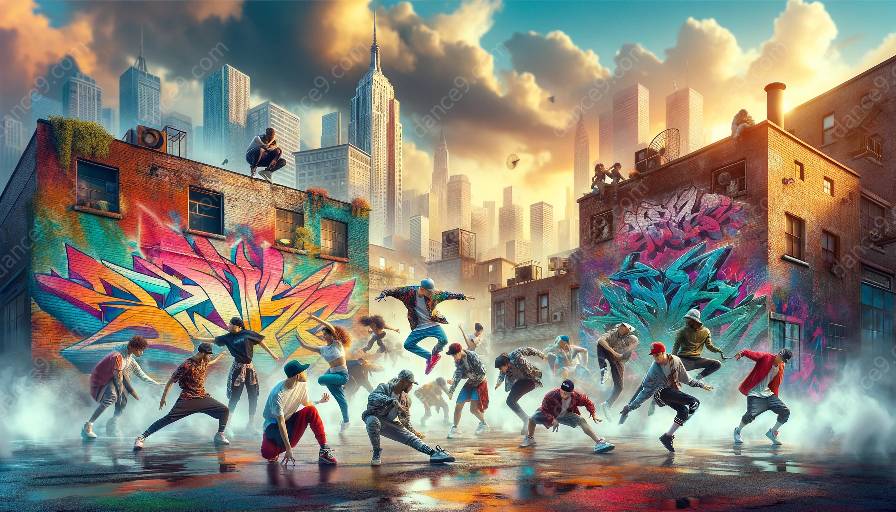Street dance is an expressive and dynamic art form that thrives on the relationship between music, rhythm, and movement. The choreography in street dance is a reflection of the energy and creativity that music and rhythm inspire in dancers. Exploring this topic requires an understanding of the intricate and symbiotic connection between music, rhythm, and street dance choreography.
Importance of Music and Rhythm in Street Dance Choreography
Music is the lifeblood of street dance, driving the movements and providing the inspiration for choreography. Rhythm, on the other hand, is the heartbeat that dictates the pace and structure of the dance routine. Together, they form the foundation on which street dance choreography is built.
When choreographing a street dance routine, dancers and choreographers meticulously analyze the music, decipher its rhythm, and interpret its mood and energy. The goal is to synchronize the movements with the beats, creating a visually stimulating and emotionally resonant performance. The connection between music and movement is so profound that it becomes the essence of street dance choreography.
Exploring Musicality in Choreography
One of the defining qualities of street dance choreography is its musicality. In this context, musicality refers to the dancer’s ability to interpret the nuances of the music through movement. It involves using the rhythm, melody, and lyrics to inform the dynamics, musical accents, and emotional expression within the choreography.
Choreographers approach musicality by delving deep into the music, identifying key elements, and translating them into movement sequences. This process demands a keen ear for rhythm, an innate sense of timing, and an understanding of the emotional narrative conveyed by the music. As a result, the dance becomes a visual representation of the music, creating a profound connection between the two art forms.
Utilizing Different Musical Styles in Choreography
Street dance choreography is incredibly versatile, capable of embracing a wide array of musical styles. From hip-hop to funk, from electronic music to traditional beats, street dance choreography adapts to the unique rhythms and characteristics of diverse musical genres. Choreographers carefully study the musical underpinnings of each style, allowing them to craft choreography that complements and enhances the auditory experience.
By exploring various musical styles, dancers and choreographers expand their creative repertoire and develop a deeper understanding of musical intricacies. This versatility enables them to synthesize different elements from the music and infuse them into their choreography, resulting in captivating and innovative dance performances.
Improvisation and Spontaneity in Response to Music
Street dance is synonymous with improvisation and spontaneity, and music serves as the catalyst for these elements. Dancers frequently infuse their choreography with impromptu movements that arise from their immediate response to the music. This organic and instinctive interaction with the music brings an element of surprise and raw energy to the performance, captivating audiences and adding a sense of unpredictability to the dance routine.
Additionally, street dance battles and freestyle sessions are heavily reliant on the relationship between the music and dancers’ ability to interpret and spontaneously respond to its rhythm. This symbiotic connection fosters an environment where creativity and individual expression flourish, showcasing the powerful influence of music on street dance choreography.
Conclusion
Music and rhythm are the vibrant threads that weave together the tapestry of street dance choreography. They provide the foundation, inspiration, and canvas for dancers and choreographers to create captivating and expressive performances. By understanding the significance of music and rhythm in street dance choreography, we gain a deeper appreciation for the art form and the limitless possibilities it offers in blending movement with musical expression.






































